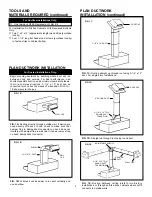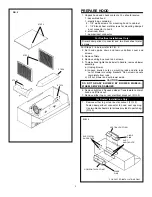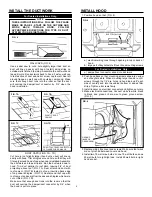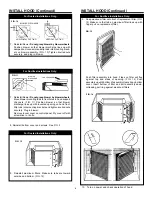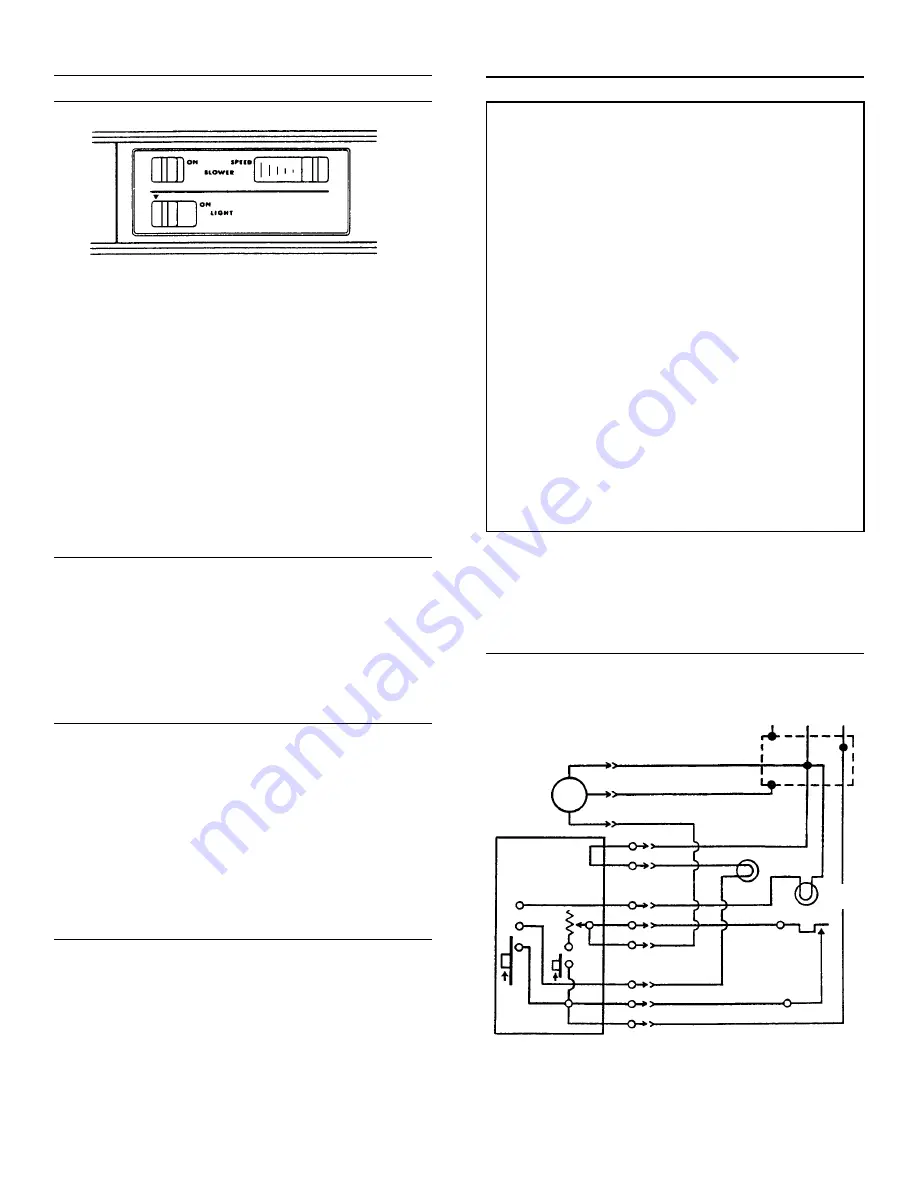
USE AND CARE
CONTROLS (FIG. 15)
BLOWER - "SPEED"
Infinite speed slide control adjusts blower speed and sound
level for quiet operation
BLOWER - "ON"
Turns blower ON and OFF.
When this control is turned ON, blower will operate at preset
speed of slide control.
LIGHT
Three-position switch
• First position (Normal) - Turns both bulbs ON.
• Second position (Night Light) - Turns right-side bulb ON.
• Third position (OFF) - Turns both bulbs OFF.
DO NOT install bulbs rated higher than 75 watts.
Install a smaller bulb on the right for a night light.
HEAT SENTRY™
Your hood is equipped with a Heat Sentry™ thermostat. This
thermostat is a device that will turn on or speed up the blower
if it senses excessive heat above the cooking surface.
1) If blower is OFF - it turns blower ON to HIGH speed.
2) If blower is ON at a lower speed setting - it turns blower up
to HIGH speed.
When the temperature level drops to normal, the blower will
return to its original setting.
FILTER CARE
Remove each filter by grasping the tab at the bottom of filter,
lifting up and swinging filter out to the side.
ALUMINUM FILTERS
Clean filters frequently in a detergent solution. They are
dishwasher safe.
REPLACEMENT
FILTERS
The aluminum filter is the only washable part of the filter system.
Snap it out of its frame and clean it in a detergent solution or
dishwasher.
The particle filter is not washable. It should last up to twelve
months with normal use.
CLEANING
Do not allow an excessive accumulation of grease. Use a mild
detergent suitable for painted surfaces. DO NOT USE
ABRASIVE CLOTH, STEEL WOOL PADS, OR SCOURING
POWDERS. Vacuum blower to clean. Do not immerse blower
in water.
7
FIG. 15
CONTROL
BOARD
(SYMBOLIC)
M
WHITE
B
GREEN
WHITE
BLACK
120 VAC
LINE IN
WHITE
WHITE
BLACK
LAMP
"A"
LAMP "B"
THERMOSTAT
1
2
4
5
6
8
9
10
BLACK
YELLOW
BLACK
WHITE
WHITE
BLACK
BLACK
ORANGE
WHITE
HOW TO AVOID A COMMON RANGE-TOP GREASE FIRE
•
Your range hood provides a protective barrier between
the cooking surface and the cabinets.
•
Keep fan, filters and grease laden surfaces CLEAN
according to instructions.
•
Always turn hood ON when cooking at high heat to keep
the cooking area and the hood cooler.
•
Use high heat settings only when necessary.
•
Never leave cooking surface unattended. Boil-over
causes smoking and greasy spillovers that may ignite.
•
Always use adequate-sized utensils.
•
If preparing flaming foods, such as Cherries Jubilee,
always turn hood ON to HIGH to prevent a high heat
situation which can cause damage or fire.
HOW TO EXTINGUISH A COMMON RANGE-TOP
GREASE FIRE
•
Never pick up a flaming pan. If dropped, flames can
spread quickly.
•
DO NOT USE WATER! A violent steam explosion may
result. Wet dishcloths or towels are also dangerous.
•
Smother flames with a close fitting lid, cookie sheet or
metal tray.
•
Flaming grease can also be extinguished with baking
soda or a multi-purpose dry chemical extinguisher.
•
Turn off surface units - If you can do so without getting
burned.
WIRING DIAGRAM
NOTE: If any of the original wire on the hood has to be replaced,
use wire having equivalent insulation and temperature rating
(105°C Thermoplastic AWM, U.L. Listed).
USE AND CARE (Continued)


